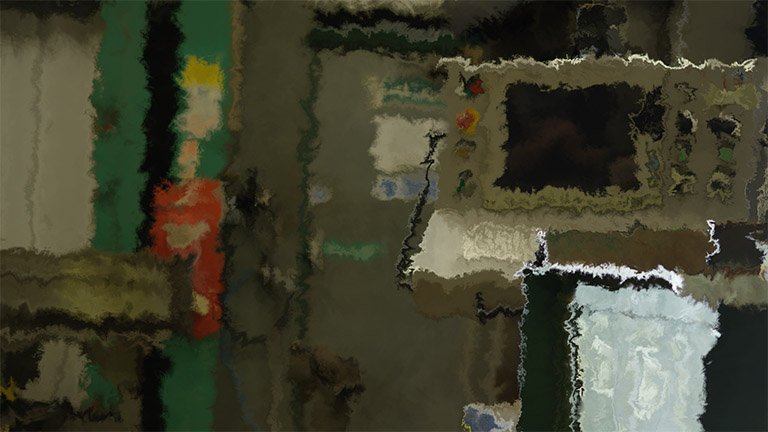Distorts your footage based on a procedurally generated fractal pattern. You can adjust the appearance of the distortion using the controls.

- Distortion: Adjusts the intensity of the distortion applied to the layer.
- Scale: Sets the scale of the distortion
- Diffusion Bias: Set the amount of the image that is affected by diffusion blurring. Increasing the setting will make the blur more prevalent.
- Diffusion Strength: Sets the strength of the blur in the areas affected by diffusion
- Distortion Rotation: Sets the angle in which the distortion is applied.
- Distort Single Axis: Enabling this option applies the distortion in a single direction. The specific angle used can be set with the Distortion Rotation setting above.
Animation
By default the Fluid Distortion is animated. You can set the details of the movement within the effect here.
- Wind Direction: Sets the direction of the movement
- Wind Speed: Sets the speed of the movement along the axis determined in the Wind Direction, by altering the position of the noise. Higher values will create more movement in the distortion.
- Noise Speed: Sets the speed of the movement of the fractal noise the distortion is based on. This speed alters the shape of the noise, while the Wind Speed property affects its position.
Noise
- Seed: Acts as a randomizer for the shape of the noise. Each seed value sets a unique starting shape for the procedurally generated noise.
- Interpolation: Provides options for how the noise is interpolated. Linear Interpolation uses the simplest path to connect points in the rectilinear grid the effect is based on. Cubic interpolation uses smoother paths to interpolate the grid. Neither option is better than the other, they just provide different options for the effect.
Transform
Multiple layers of fractal noise are combined to create the final noise that the distortion is based on. The Transform controls adjust the primary noise, while the Sub Settings alter the sub levels of noise that add detail to the distortion.
- Position: Sets the position of the primary fractal noise the distortion is based on.
- Use Layer: You can select another layer on your timeline, to parent the position of the distortion to that layer
- Rotation: Sets the rotation of the primary fractal noise
- Axis Scale X: Alters the aspect ratio of the primary fractal noise by changing its scale along the X axis. Higher values will stretch the distortion horizontally.
- Axis Scale Y: Alters the aspect ratio of the primary fractal noise by changing its scale along the Y axis. Higher values will stretch the distortion vertically.
Sub Settings
- Sub Levels: Sets the number of sub levels that are used to calculate the distortion. Higher levels create greater detail in the distortion.
- Influence: Controls the intensity with which the sub levels alter the primary noise.
- Scale: Sets the scale of the sub levels, thus impacting the size of the detail added by the additional sub levels.
- Rotation: Alters the angle of the sub levels which are laid over the primary noise.
- Offset: Sets the position of the sub levels in relation to the primary noise position.
- Center Subscale: Enabling this option links the center of all subscale layers, so they stay aligned when offset using the above control.
